Chapter 2: The Stability of Two-Dimensional Maps
Section 4.5: Phase Space Diagrams
-
In this section we will explore the geometry of the Phase Portraits, or Phase Space Diagrams, of two-dimensional linear maps of the form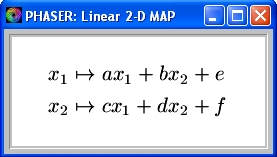 (1)
(1)
First, we will present typical Phase Portraits of linear maps whose coefficient matrices A =(a, b; c, d) are in Jordan Normal Form. Then we will analyze the geometric effect of transforming a linear map to its Jordan Normal Form. Here are some general facts to remember when analyzing phase portraits of linear maps:
- If the matrix (A - I) is nonsingular then the origin is the only fixed point.
- If the moduli of both eigenvalues of A are smaller than 1, then the origin is asymptotically stable. If the eigenvalues are complex, then the orbits rotate about the origin.
- If at least one of the eigenvalues of A has modulus greater than 1, then the origin is unstable. If one eigenvalue has modulus less than 1 and the other greater than 1, then the origin is of saddle type with one in-coming and one out-going directions.
- If modulus of one of the eigenvalues of A is moderately larger than 1, say 2, then the orbits can move towards infinity (especially on the computer) after only several dozen iterations.
- If there is a negative eigenvalue, then an orbit alternates about a line.
- Example: Linear 2D Maps in Normal Form
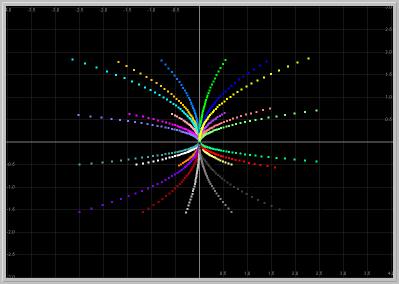
Figure 4.5.1. Linear-2D MAP in Eq.(1) for a = 0.9, b = 0, c = 0, d = 0.95. There are two positive eigenvalues with moduli less than 1. The origin is asymptotically stable---a sink.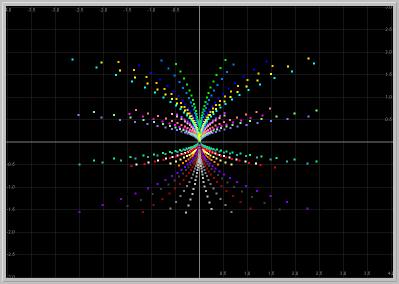
Figure 4.5.2. Linear-2D MAP in Eq.(1) for a = -0.9, b = 0, c = 0, d = 0.95. There is one positive and one negative eigenvalue with moduli less than 1. The origin is asymptotically stable---a sink. Notice the alternation of the orbits about the vertical axis.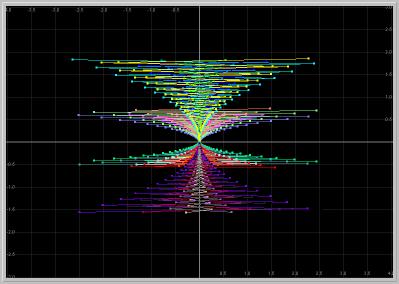
Figure 4.5.3. Linear-2D MAP in Eq.(1) for a = -0.9, b = 0, c = 0, d = 0.95. This is the same picture as the previous one except that the successive points are connected.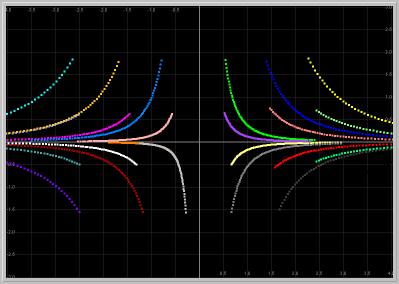
Figure 4.5.4. Linear-2D MAP in Eq.(1) for a = 1.02, b = 0, c = 0, d = 0.95. There are two positive eigenvalues, one with moduli greater than 1 and the other less than 1. The origin is unstable---a saddle.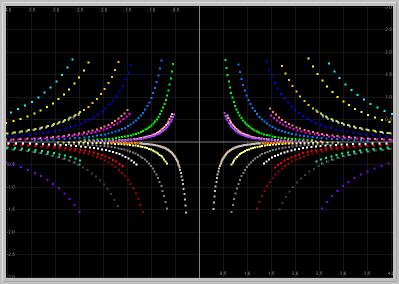
Figure 4.5.5. Linear-2D MAP in Eq.(1) for a = -1.02, b = 0, c = 0, d = 0.95. There are one negative and one positive eigenvalues, one with moduli greater than 1 and the other less than 1. The origin is unstable---a saddle. Notice that orbits straddle the vertical axis (the x1 coordinate alternates signum).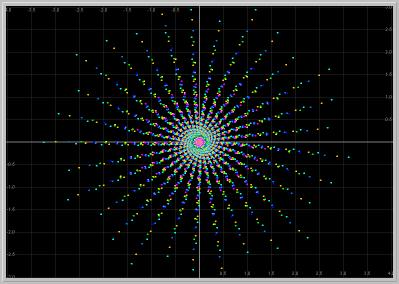
Figure 4.5.6. Linear-2D MAP in Eq.(1) for a = 0.79, b = 0.6, c = -0.6, d = 0.79. The eigenvalues are complex with moduli less than 1. The origin is asymptotically stable (spiral).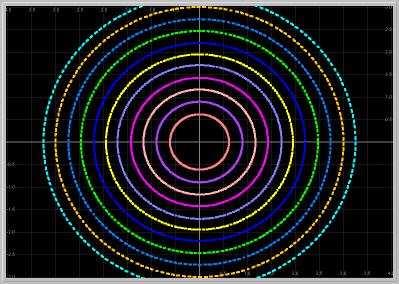
Figure 4.5.7. Linear-2D MAP in Eq.(1) for a = 0.8, b = 0.6, c = -0.6, d = 0.8. The eigenvalues are complex with moduli 1. The origin is stable (center).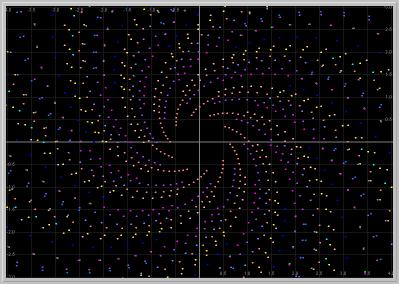
Figure 4.5.8. Linear-2D MAP in Eq.(1) for a = 0.81, b = 0.6, c = -0.6, d = 0.81. The eigenvalues are complex with moduli greater than 1. The origin is unstable (spiral).Activities:
- Click on any of the pictures above to load it into your local copy of Phaser. Then set the parameters to various values to gain insight into the Phase Portraits of linear planar maps.(PhaserTip: Changing Parameters)
- One interesting case we have not illustrated is when eigenvalues are real with modulus 1. This and the next activity will explore this situation. Click on the first picture to load it into your local copy of Phaser. Set the the parameters to a = 1.0, b = 0.0, c = 0.0, d = 1.0. (PhaserTip: Changing Parameters) Clear and Go. What happens to the number of fixed points? Is the origin stable?
- Click on the first picture again to load it into your local copy of Phaser. Set the the parameters to a = 1.0, b = 1.0, c = 0.0, d = 1.0. (PhaserTip: Changing Parameters) Clear and Go. Is the origin stable?
- Example 4.5:
In this example, we will examine the Phase Portrait of the Linear-2D MAP for the paramater values a = 1, b = 1, c = 0.25, d = 1.
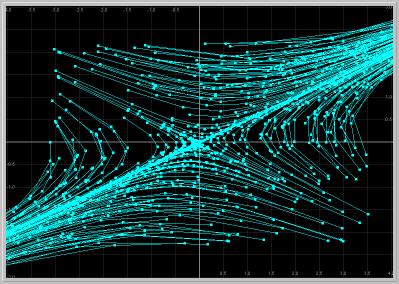
Figure 4.5.9. Linear-2D MAP in Eq.(1) for a = 1.0, b = 1.0, c = 0.25, d = 1.0. There are two positive eigenvalues, one with moduli greater than 1 and the other less than 1. The origin is unstable---a saddle. Notice the incoming (stable manifold) and the outgoing (unstable manifold) lines. These lines are the directions of the eigenvectors.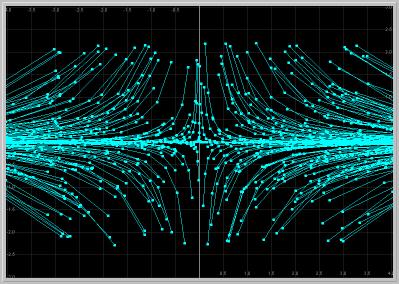
Figure 4.5.10. Linear-2D MAP in Eq.(1) for a = 1.5, b = 0.0, c = 0.0, d = 0.5. This is the Jordan Normal form of the system above. The eigenvalues are the same, 1.5 and 0.5, as the ones of the original system. Notice that, the stable and unstable manifolds are now the axes.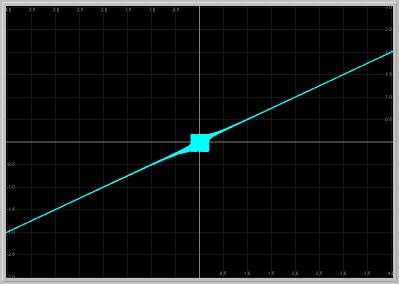
Figure 4.5.11. Linear-2D MAP in Eq.(1) for a = 1.0, b = 1.0, c = 0.25, d = 1.0. Here 2500 initial conditions starting in a FlowBox about the origin are iterated forward. When orbits near a saddle point are iterated forward, they quickly follow the unstable manifold.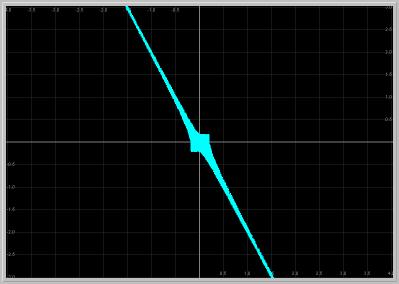
Figure 4.5.12. To plot the stable manifold, one can iterate initial conditions starting near the origin backwards. This is realized, most conveniently, by iterating these points forward under the inverse of the map. The inverse of the map above is given by the parameter values a = 1.333333, b = -0.333333, c = -1.333333, d = 1.333333. Here, 2500 initial conditions starting in a FlowBox about the origin are iterated forward under the inverse of the map. When orbits near a saddle point are iterated forward under the inverse of a map, they quickly follow the stable manifold of the original system.Activities:
- Click on the third picture. Set the parameters to a = 1.5, b = 0.0, c = 0.0, d = 0.5. (PhaserTip: Changing Parameters) Clear and Go to see the unstable manifold of the map in Jordan Normal Form.
- Click on the fourth picture. Determine the parameters for the inverse of the map in Jordan Normal Form and set the parameters to these values. (PhaserTip: Changing Parameters) Clear and Go to see the stable manifold of the map in Jordan Normal Form.
[ Previous Section | Next Section | Main Index | Phaser Tips ]